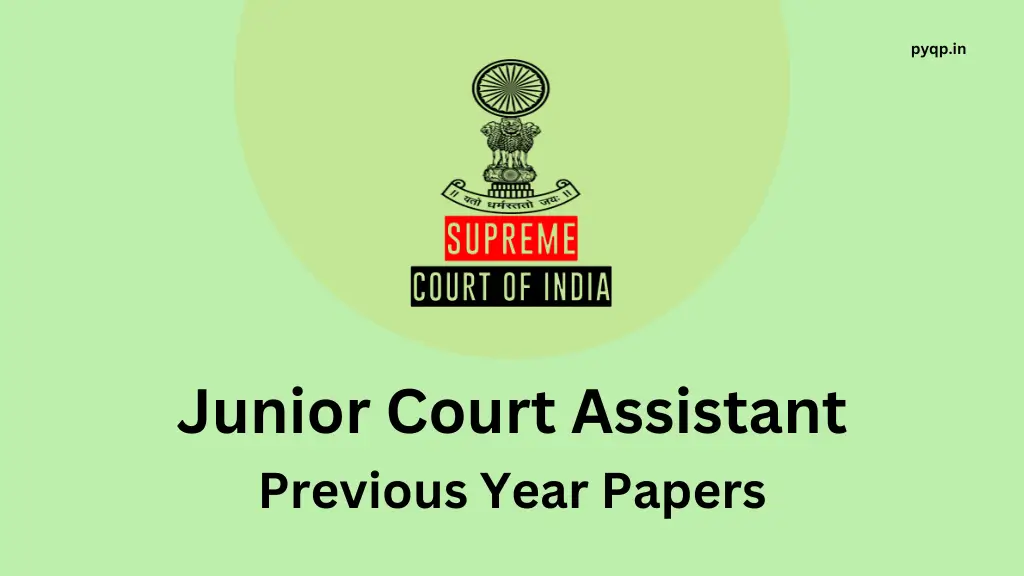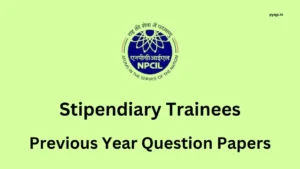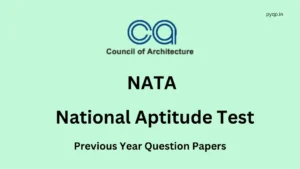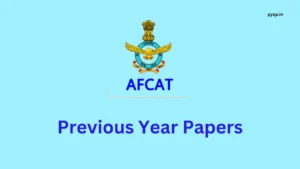SC JCA Descriptive Paper

Supreme Court Junior Court Assistant (SC JCA) recruitment was started in 2022 and its prelims exam was held in September 2022 and the SC JCA descriptive paper was held on 25th June 2023 after a long period of nine months. In this blog post, we will provide a 2023 descriptive paper, check below for more details.
1. Eligibility
a.) Age
- Minimum Age – 18 years
- Maximum Age – 30 years
b.) Essential Qualifications
- Bachelor’s Degree from a recognised University
- Minimum speed of 35 w.p.m in English Typing on computer
- Knowledge of Computer Operations.
2. Fee
| Category | Fee |
|---|---|
| General/OBC | Rs 500 /- |
| SC/ST/Ex-Servicemen/PH/Freedom Fighter | Rs 250 /- |
3. Salary
It is a Group B Non-Gazetted placed in Level 6 of the Pay Matrix with an initial Basic Pay of Rs 35400 /-. The approximate Gross Salary as per the existing rate of allowances including HRA comes to Rs. 63068/- per month (pre-revised pay scale PB-2 with Grade Pay of Rs. 4200/-).
4. Scheme of Exam
SC JCA exam consists of Prelims, Mains (Descriptive) papers and an Interview.
Prelims
| Subject | Questions | Marks | Duration |
|---|---|---|---|
| General English | 50 | 50 | – |
| General Aptitude | 25 | 25 | – |
| General Knowledge | 25 | 25 | – |
| Computer | 25 | 25 | – |
| Total | 125 | 125 | 2 hours |
| Typing (English) test on Computer with minimum speed 35 w.p.m. after deduction of mistakes (mistakes allowed 3%) | – | – | 10 minutes |
Note:
- There is a negative marking of 1/4 or .25 marks
- The Typing Test is conducted half an hour after the prelims exam. The typing test is only conducted in the English language.
Mains (Descriptive Paper)
- This is a written exam consisting of 3 questions for a total of 100 marks.
SC JCA Descriptive Paper (held on 25th June 2013)
Question Paper Specific Instructions:
- All questions are to be attempted.
- The maximum Marks assigned to a question/part are indicated against it.
- Answers must be written in English only if any other language is used, the paper shall not be evaluated.
1. Read the following passage and answer the questions that follow:
- Music in the Indian subcontinent is a reflection of the diverse elements -social, linguistic and cultural – that constitute its heterogeneous population. The extraordinary variety of musical types is probably unparalleled in any other equivalent part of the world. Music plays a vital role in the religious, social and artistic lives of the people. A great deal of it could be termed functional, as it is an indispensable part of the activities of everyday life, ranging from work and agricultural songs to the music with accompanies life-cycle events, such as birth, initiation, marriage and death.
- In spite of the great diversity of music in the area, it is possible to make a few general statements which would be valid for most of the music in India. For instances, apart from modern developments, Indian music is based mainly on melody and rhythm; harmony and polyphony, as known in the West, have no part in the music. Indian music is often accompanied by a drone which establishes a fixed frame of reference and precludes key changes which are so characteristic of Western music. There is, however, such a great variety of melodic and rhythmic form in India that it would be injudicious to generalize any further.
- In dealing with origins of this exceedingly complex musical culture, we are fortunate that music has been a part of India’s literary tradition for nearly 2000 years, and references to music go back even further; moreover, there are still areas in India which have remained more or less isolated from the main cultural stream and appear to have preserved their ancient musical forms relatively unchanged. Through literary sources, we can trace something of the history of Indian classical music, which is predominantly an art form found in the cities. These sources, however, give no indication of the nature of village music, although they often mention the music of various regions. Nor do they discuss the non-classical forms found in the cities. Classical music has an elaborate musical theory and literature, and this tends to obscure the fact that a small minority of the population is involved with this kind of music. Even in the cities of India, classical music is by no means the popular form of music and new forms are evolving which appear to have much more relevance to the majority of Indians. These new forms, however, derive much of their inspiration from the classical tradition and most of the musicians involved in their composition and performance have been trained in the classical idiom.
- A fundamental element of Indian classical music is the use of a drone, usually provided by a wind instrument or a plucked stringed instrument, which is tuned to a pitch appropriate to the singer or instrumentalist – there being no concept of a fixed pitch. Classical music is performed by small ensembles usually consisting of one main instrument or singer, one or more secondary instruments that echo, but may at times carry, the main melody line, and one or more percussion instruments that mark the time measure and provide a rhythmic counterpoint. The melody line is largely improvised on melodic entities called ‘ragas’, each of which prescribes a distinct set of musical possibilities. These have been handed down as part of the oral tradition, from teacher to pupil over many generations.
- What does music signify in the context of the Indian subcontinent? (5 marks)
- Write a short note on the role of music in the lives of the people of India. (5 marks)
- What are the major differences between Western music and Indian music? (5 marks)
- Comment on the problems involved in tracing the history of Indian music through literary sources. (5 marks)
- What kind of music do city dwellers of India find appealing? (5 marks)
- Identify from the passage the word which means the same as the following words: (1 x 5 marks)
- diverse (select the answer from para 1)
- prevent (select the answer from para 2)
- imprudent (select the answer from para 2)
- obfuscate (select the answer from para 3)
- suitable (select the answer from para 4)
2. Make a precis of the following passage. (Answer should not exceed 140 words). (30 Marks)
In India, primary education is legally made the obligation of parents and the right of the child. State-sponsored schooling is almost free for the most deprived and, hence, completely affordable. Provision is made for midday meals for children so that food insecurity does not drive pupils away from the classroom. The central government and the state governments treat school education as one of their primary responsibilities. Child labour is officially made illegal, and even higher education is made free for women is many states. There are provisions for educational reservations for children belonging to schedules castes and schedules tribes as also for children from other backward communities. The Indian state allows the use of nearly thirty Indian languages and some foreign languages for the purpose of primary education. Adult literacy and non-formal schooling are continuously promoted. There are constitutional guarantees built into the educational programmes aimed at promoting all the listed languages. The Central Institute of Indian Languages is charged with the production of educational materials in the marginalized and minority languages. In spite of such efforts, speakers of many marginalized languages and indeed some of the major languages seem to display indifference towards their upkeep. An unimaginably large number of children join schools that charge exorbitant fees and offer English as the medium of instruction. In sum, schooling is overwhelmingly geared towards enabling children to join institutions of higher learning, disproportionately larger number of them providing education in engineering or information and communication technology. When a child joins a school giving instruction in an Indian language, the decision comes to be seen as the beginning of a social disadvantage. Under these circumstances, the preservation of languages, particularly the ones that call for concerted effort towards their maintenance, is quite a daunting task and not one that can be accomplished merely by initiating structural changes. It is precisely for this reason that India needs to do everything possible for the enumeration, conservation and promotion of the languages that our ancestors have bequeathed to us through centuries of intellectual labour and cultural investment. In other words there is an urgent need in India to perceive language rights as one of the essential human rights.
3. Write an essay on any one of the following topics in about 600 words: (40 marks)
- Yoga as a means of promoting physical and mental well-being
- Sustainable Development and the Protection of Ecology
- Impact of social media on Teenagers
- Removing gender disparity
- Water harvesting
Download Notifications
| Notification Year | Download Links |
|---|---|
| 2022 | Click here |
Download SC JCA Papers
| Date/Year | Download Links |
|---|---|
| Descriptive (Mains) 25th June 2023 | Click here |
| Prelims 26th September 2022 Shift 1 | Click here |
| Prelims 26th September 2022 Shift 2 | Click here |
| Prelims 27the September 2022 | Click here |
| Prelims 17th September 2017 | Click here |
| Descriptive (Mains) 23rd September 2018 | Click here |


